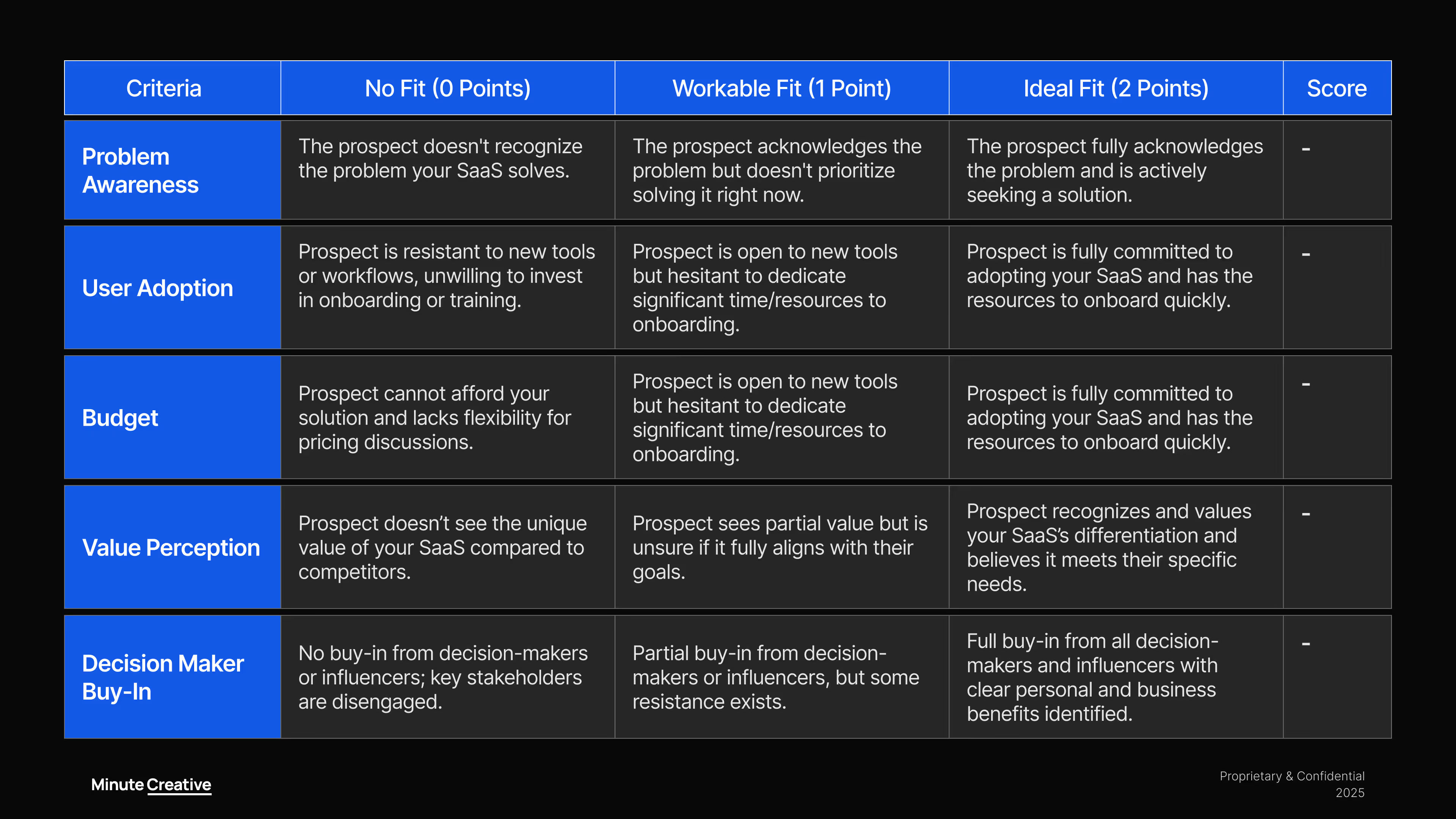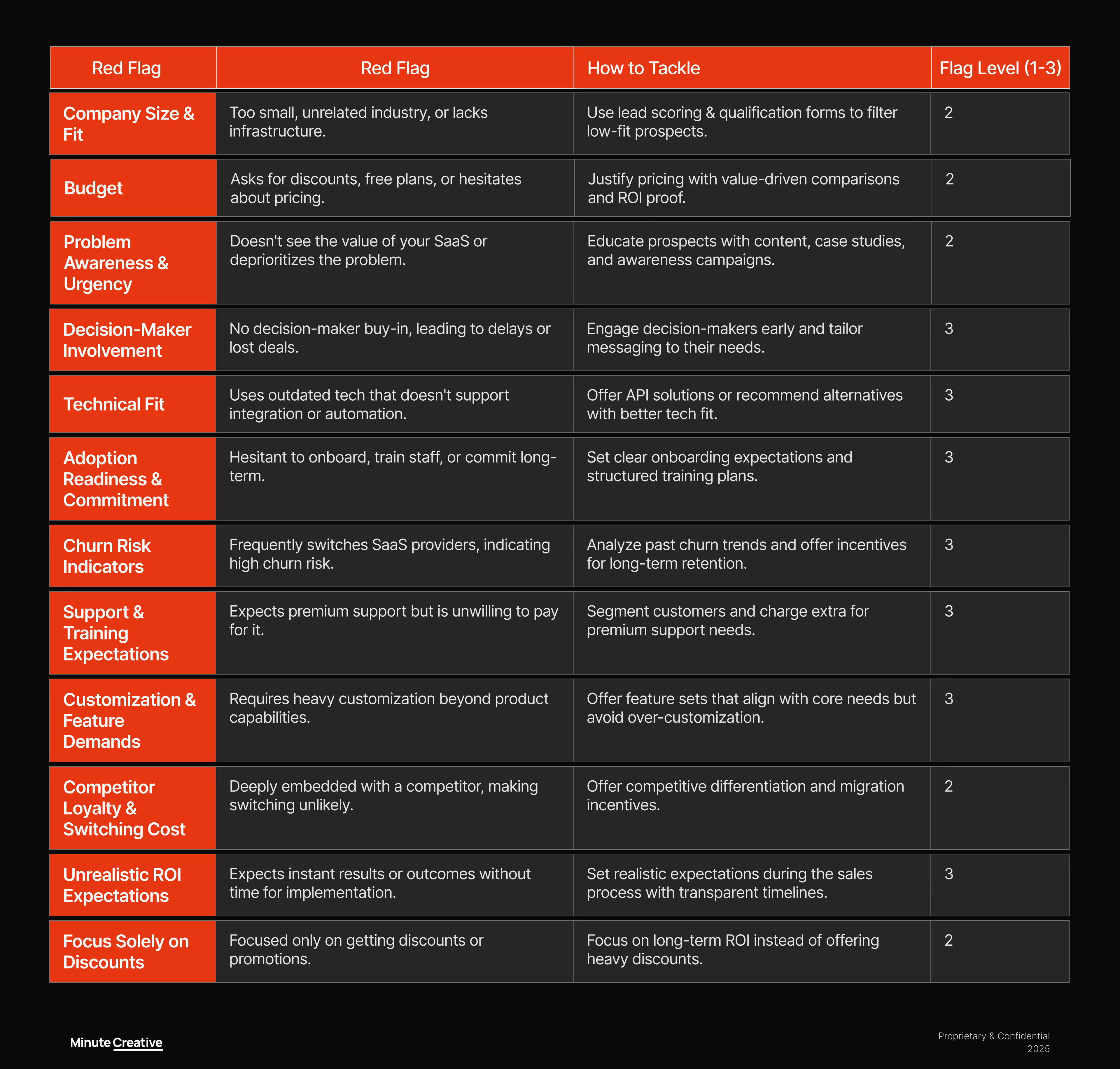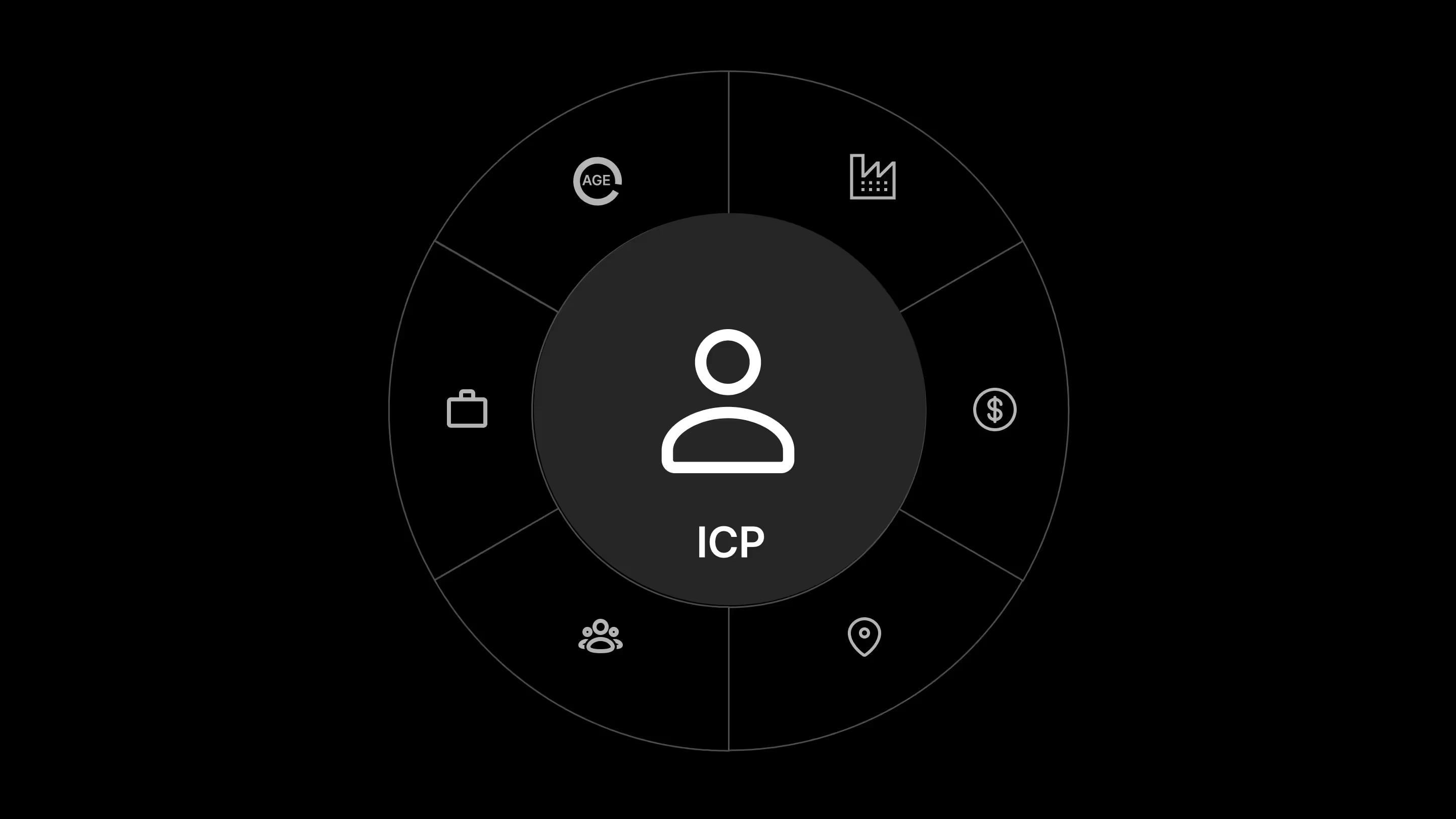Your SaaS startup might be attracting leads, but are they the right ones?
If you’re attracting leads who churn quickly, constantly haggle on price, or fail to see the value in your SaaS, the problem isn’t just your targeting — it’s also who you’re NOT filtering out.
The Anti-ICP Framework flips the traditional ICP approach on its head. Instead of starting with who to target, it begins with defining who you don’t want to target — your Anti-ICP.
This approach eliminates wasted time and effort on leads that don’t convert, allowing you to focus on customers who truly benefit from your SaaS and drive sustainable growth.
What is the Anti-ICP Framework?
The Anti-ICP Framework is a strategy that defines the types of customers your SaaS should actively avoid before identifying your Ideal Customer Profile (ICP).
Your Anti-ICP includes customers who:
❌ Struggle to adopt or use your product effectively.
❌ Demand features or support that your SaaS isn’t built to provide.
❌ Have low budgets, high churn rates, or unrealistic expectations.
By filtering out these customers first, you create a foundation to focus on your perfect-fit ICP, ensuring higher conversions, retention, and growth.
Why Start with the Anti-ICP?
Here’s why the Anti-ICP Framework is critical for SaaS growth:
- Prevents Misaligned Leads
Avoids onboarding customers who are unlikely to succeed with your product. - Protects Your Brand and Resources
Keeps you from wasting time and energy on high-maintenance, low-value clients. - Sharpens Your ICP Definition
By knowing who NOT to target, you gain clarity on who you SHOULD target. - Lowers Churn Rates
Misaligned customers often leave quickly, costing you in both acquisition costs (CAC) and reputation.
Step-by-Step Anti-ICP Framework to Identify Your SaaS ICP
Step 1: Define Your Anti-ICP (Who NOT to Target)
Start by analyzing your existing customer base.
- Who churned quickly?
- Who caused the most support tickets or feature requests?
- Who never fully adopted your SaaS?
- Who complained about pricing or ROI?
Example:
For a premium SaaS product like Superhuman, the Anti-ICP includes:
- Users looking for free or low-cost email tools.
- Teams unwilling to invest time in learning advanced productivity features.

Step 2: Identify Red Flags in Prospects
Once you have an Anti-ICP, identify red flags in your sales and marketing funnel to spot these customers early.
Examples of Red Flags:
- Budget concerns during discovery calls.
- Repeated questions about unsupported features.
- Lack of alignment with your SaaS’s primary use case.

Step 3: Define Your Ideal Customer Profile (Who TO Target)
With your Anti-ICP in mind, shift focus to your ICP — the customers who:
✅ Fit your SaaS’s use case perfectly.
✅ See immediate value from your product.
✅ Are willing to invest time and money into onboarding and adoption.

Step 4: Focus on Pain Points & Goals
Clearly define the pain points your ICP faces and how your SaaS solves them.
- Pain Points: What are they struggling with? (e.g., inefficiency, tool overload, lack of visibility).
- Goals: What are they trying to achieve? (e.g., faster workflows, increased ROI, better team collaboration).
Example:
For a project management SaaS targeting agencies:
PainPoint: Disorganized workflows and missed deadlines.- Goal: Streamlined communication and improved project tracking.

- Score 1-2: Deprioritize. These challenges have low impact.
- Score 3-4: Monitor & Validate for 4-6 weeks. If they worsen, move forward.
- Score 5: Immediate Action Required! Fix now.
Step 5: Validate Your ICP and Anti-ICP
Continuously test and refine both profiles by analyzing data and gathering feedback.
- Look at churn rates, LTV, and customer success metrics to validate your ICP.
- Track how effectively you’re filtering out Anti-ICP customers.

How to Use the Anti-ICP Framework in SaaS Growth
💡 Here’s how the Anti-ICP Framework impacts every area of your business:
- Marketing: Use messaging & ads to repel bad leads (e.g., “Built for $5M+ ARR SaaS”).
- Sales: Train your SDRs to filter out red-flag prospects early in discovery calls.
- Product Development: Prioritize features that serve your ICP, not one-off requests from misaligned customers.
- Customer Success: Refine onboarding to match your ICP’s pain points & goals.
Anti-ICP Example: SaaS for Remote Collaboration
Anti-ICP
- Company Size: Teams with fewer than five employees (too small to justify the investment).
- Budget: Customers seeking free or budget solutions.
- Mindset: Teams resistant to adopting new tools or workflows.
ICP
- Industry: Marketing agencies and SMBs with remote teams.
- Company Size: 10-50 employees.
- Roles: Team leads, operations managers, and founders.
- Pain Points: Disconnected communication and lack of visibility into team progress.
- Goals: Real-time collaboration and centralized workflows.
Conclusion: Why the Anti-ICP Framework™ Works
By defining your Anti-ICP first, you eliminate time-wasting prospects and focus only on customers who truly benefit from your SaaS.
✅ Better-fit customers → Higher retention & lifetime value (LTV).
✅ Fewer bad leads → Lower sales friction & churn.
✅ More scalable growth → Efficient ad spend & acquisition costs (CAC).
🚀 What’s Next? Finding Your Core Differentiator
Now that you’ve filtered out the wrong customers with the Anti-ICP Framework, it’s time to focus on attracting the right ones.
The next step? Creating a core differentiator that makes your SaaS stand out.
👉 Continue reading: Finding Your Core Differentiator






